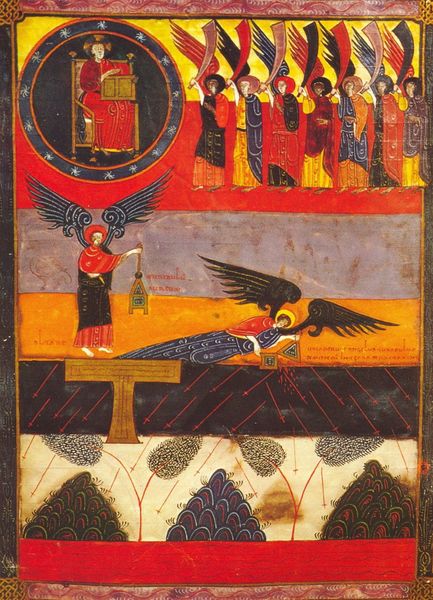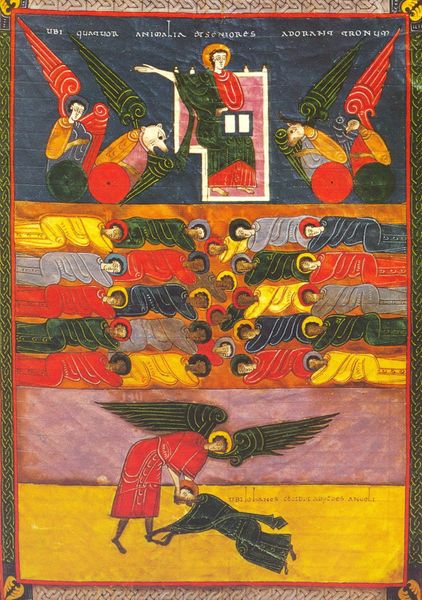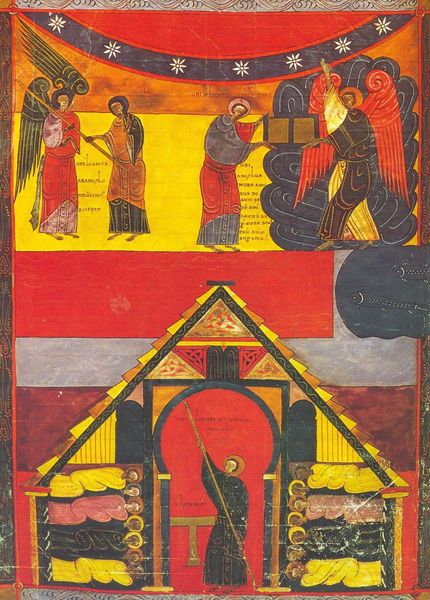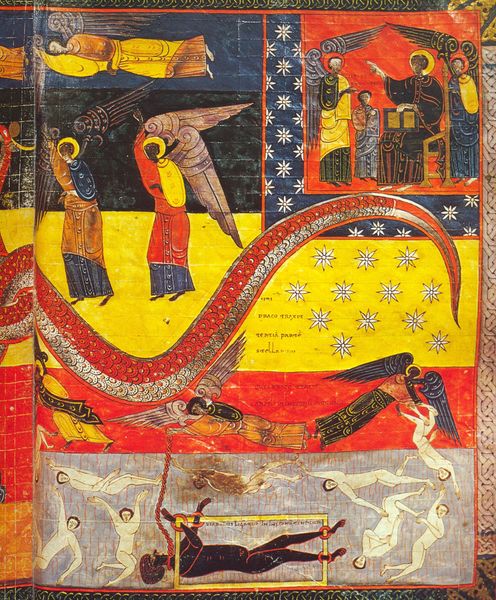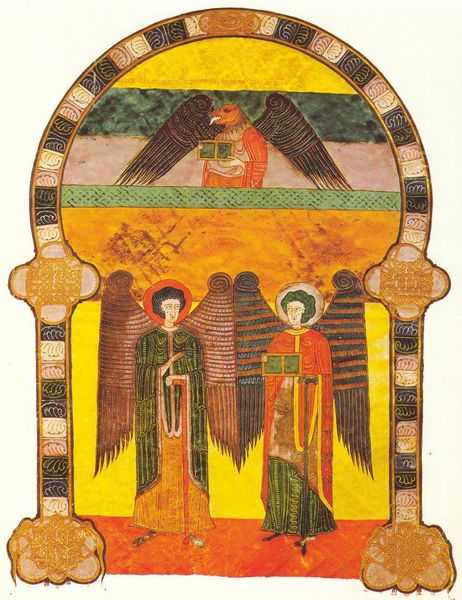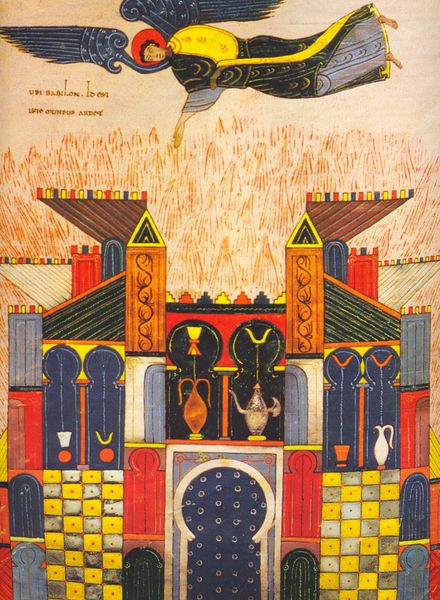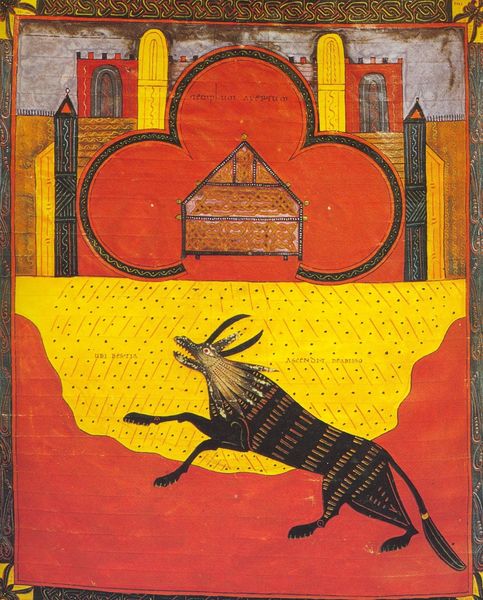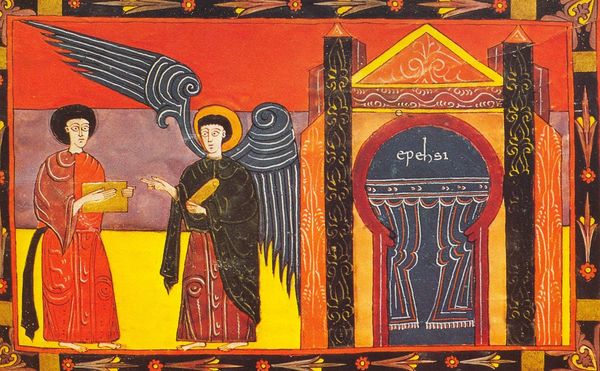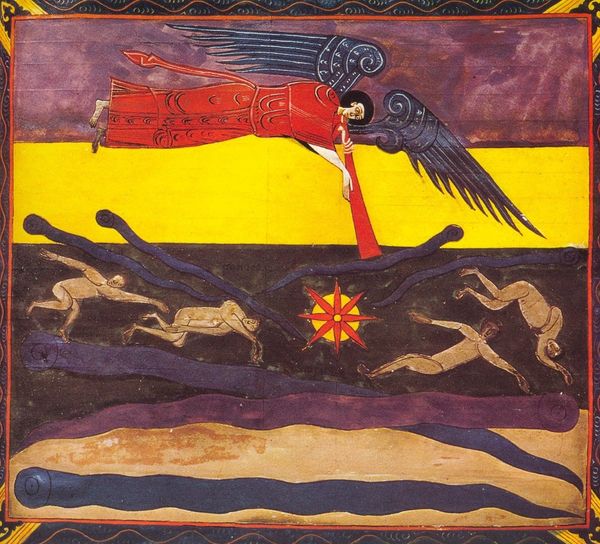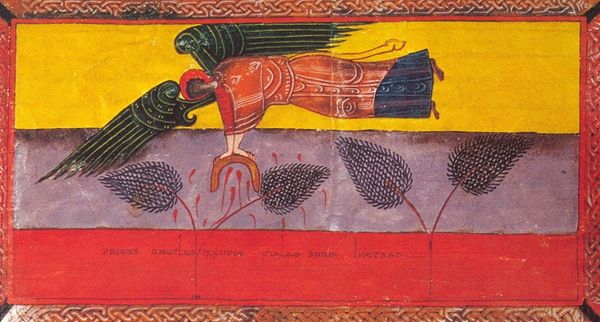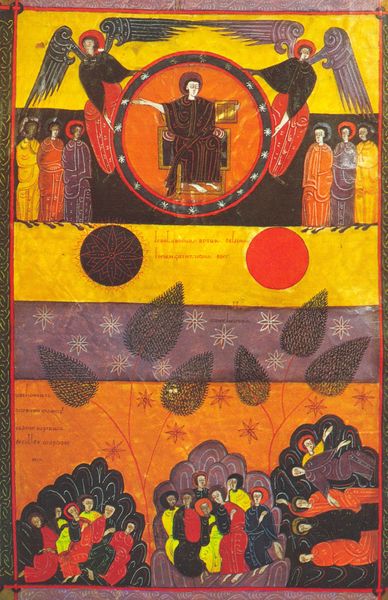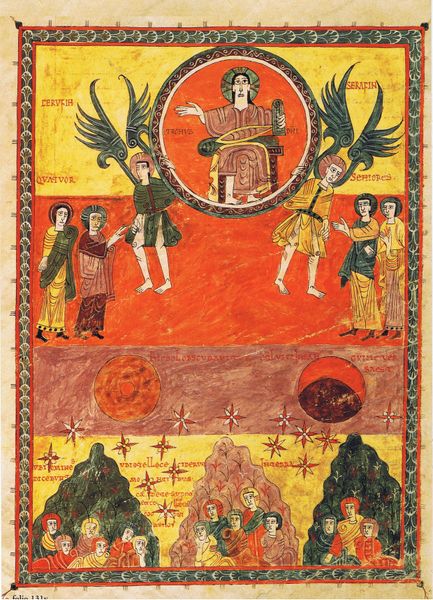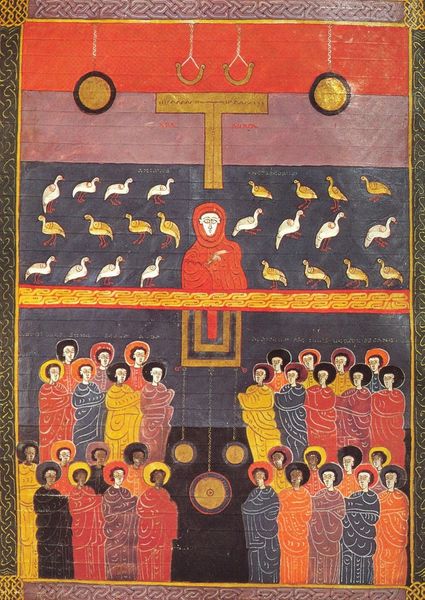
tempera, painting
#
medieval
#
tempera
#
painting
#
figuration
#
history-painting
Copyright: Public domain
Facundus created this tempera on vellum around 1050, and the image depicts a scene from the Book of Revelation, specifically the pouring of the seventh bowl. Painted in Spain during a period of both Christian and Muslim rule, the image presents an angel pouring a bowl of divine wrath upon the earth. We see a walled city rendered with horseshoe arches, typical of Islamic architecture. By the eleventh century, the Christian kingdoms of northern Spain were well into a centuries-long effort known as the Reconquista, in which they slowly pushed southward to reclaim territory previously under Muslim control. While the imagery is apocalyptic, the architectural references suggest a more immediate cultural and political context. Religious art is always, to some degree, about contemporary society and power. In order to understand this image more deeply, historians might investigate the relationship between religious institutions and political power in eleventh-century Spain.
Comments
No comments
Be the first to comment and join the conversation on the ultimate creative platform.
